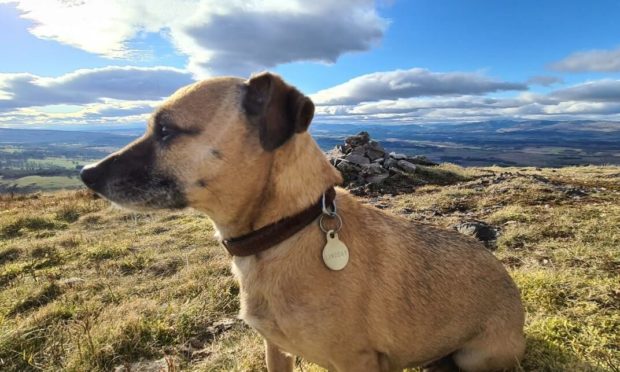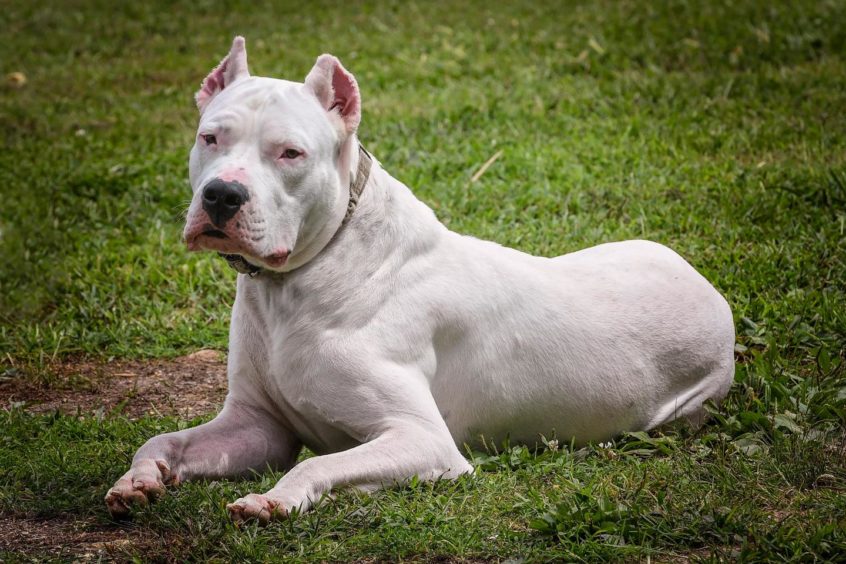That might not look like one of those dangerous dogs at my feet but we don’t call her the hairy hand grenade for nothing.
She’s one part Jack Russell, one part Chihuahua, four and a half kilograms of molten rage.
It’s not her fault. She wasn’t socialised with other dogs much before I got her. That’s what happens when people buy a puppy because it matches a handbag.
Her instinct is to yap first, ask questions later.
It’s not clever and it’s certainly not big. But it’s her way of telling potential threats there’s the heart of a lion beating within that tiny trembling frame.

I understand her funny ways now. We shorties need to stick together.
And while a miniature dog puffing itself up into a righteous fury is probably more comical than anything else, it’s my job to make sure we don’t both land in trouble if another animal, or one of those interfering humans, takes it the wrong way.
So when the postie comes calling I make sure she’s tucked away and doesn’t feel obliged to “protect” the house.
And when we’re somewhere out of the ordinary I keep her close by and give strangers’ dogs a wide berth.
They say you don’t get bad dogs, just bad owners.
I’d hate to be labelled one of them so that’s how I fulfil my side of the bargain.
Dangerous Dogs Act is all of our business
They also say you can’t judge a book by its cover.
And that’s why the Dangerous Dogs Act is back in the news.
And I know there are lots of terrible things happening in the world but I really like dogs.
So do Courier readers, judging by the comments when we reported on it this week.
And with 11 million dogs in the UK, their behaviour is your business – even if you don’t own one yourself.
So here goes.
The act, which outlaws the ownership of four kinds of dogs, is not fit for purpose.”
The Scottish SPCA has launched a a campaign called No Bad Breed, with the aim of overturning the 30 year-old law.
The charity says the act, which outlaws the ownership of four kinds of dogs, is not fit for purpose.
At present, if a Japanese Tosa, Dogo Argentino, Fila Brasileiro or American pit bull comes into the care of the Scottish SPCA it must be put to sleep.
That’s regardless of its temperament or suitability for adoption.
You don’t see or hear a whole lot about Japanese Tosas, Dogo Argentinos or Fila Brasileiros.
Maybe, in that way, the law served its purpose.
But since 2013, 24 pit bulls that were being looked after by the Scottish SPCA have had to be destroyed.
Losers in genetic lottery
In some cases the owners did not realise their dog was a pit bull when they got it as a pup.
Their pets were probably far better behaved than my own tiny timebomb.
But because she had the good fortune to be born a – okay, I’ll say it – jackahuahua and they lost out in the genetic lottery they had to die while she lives to snarl another day.
🐾 Today we launch our #nobadbreed campaign on the 30th anniversary of the Dangerous Dogs Act.
We want Section One scrapped, or amended so banned breeds who come in to our care and have not harmed anyone can be rehomed.
Sign our petition here: https://t.co/IXldTi1m01 pic.twitter.com/d8F7sPxO3i
— Scottish SPCA 🐾 (@ScottishSPCA) August 12, 2021
It doesn’t seem very fair.
It certainly doesn’t meet the old “innocent until proven guilty” test.
And not surprisingly the Scottish SPCA’s petition was well on its way to hitting its 10,000-signature target, last time I checked.
We’d like to see a bigger focus on legislation that ensures responsible dog ownership rather than punishing individual dogs for the way they look…”
Mike Flynn, Scottish SPCA
The charity wants section one of the Dangerous Dogs Act removed, so dogs can be judged on “deed not breed”.
Dogs which attack could still be put down, but the blanket ban on the four types named in the legislation would go.
Scottish SPCA chief superintendent Mike Flynn says: “We believe any breed of dog can be potentially out of control and dangerous in the wrong hands.
“We’d like to see a bigger focus on legislation that ensures responsible dog ownership rather than punishing individual dogs for the way they look if they haven’t harmed anyone.”
Act was unpopular from the start
I remember the law being introduced because I interviewed a man whose dogs were in line to be destroyed. Two well cared for, well behaved pit bulls that sat obediently at his feet all the time we were talking.
There had been a number of attacks on children and we went through one of these moral panics that were popular in the 1990s.
The old dog licence was abolished in 1987. At 37p it wasn’t worth the trouble of enforcing.
So in order to be seen to be doing something the Conservative government banned a small number of big strong dogs which were in danger of becoming fashionable with the wrong kinds of people.
It was a bad law, introduced in haste, and it’s still a bad law today.
And here’s the thing. It didn’t stop dog attacks either.
Defra says 250,000 people turn up at minor injury and emergency units each year due to dog bites.
There are cases coming through our courts all the time.
Dangerous dogs come in all breeds
Data suggests Labradors are the biggest culprits. Probably because they make up such a big proportion of the dogs in the UK today.
Jack Russells and Cocker Spaniels don’t come out of this too well, either, so I’m really skating on thin ice.
The problem isn’t dogs, though. It’s people.
And that’s why the review the Scottish SPCA is calling for is long overdue.
Continuing to punish a vanishingly small number of dogs for the way they were born is a waste of time and effort.
Supporting agencies like the Scottish SPCA to help people become better owners will make life safer and more pleasant for everyone.
Oh and if you see a short angry woman walking towards you with a short angry jackahuahua, step out of our way if you know what’s good for you.




